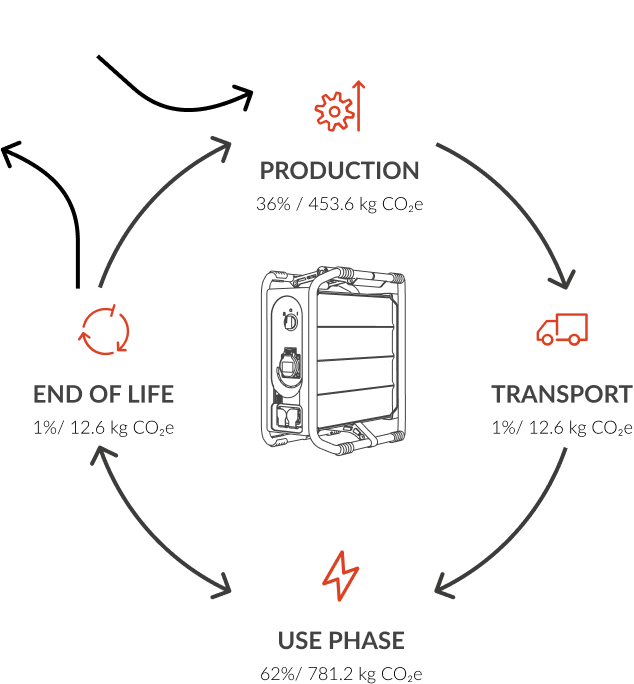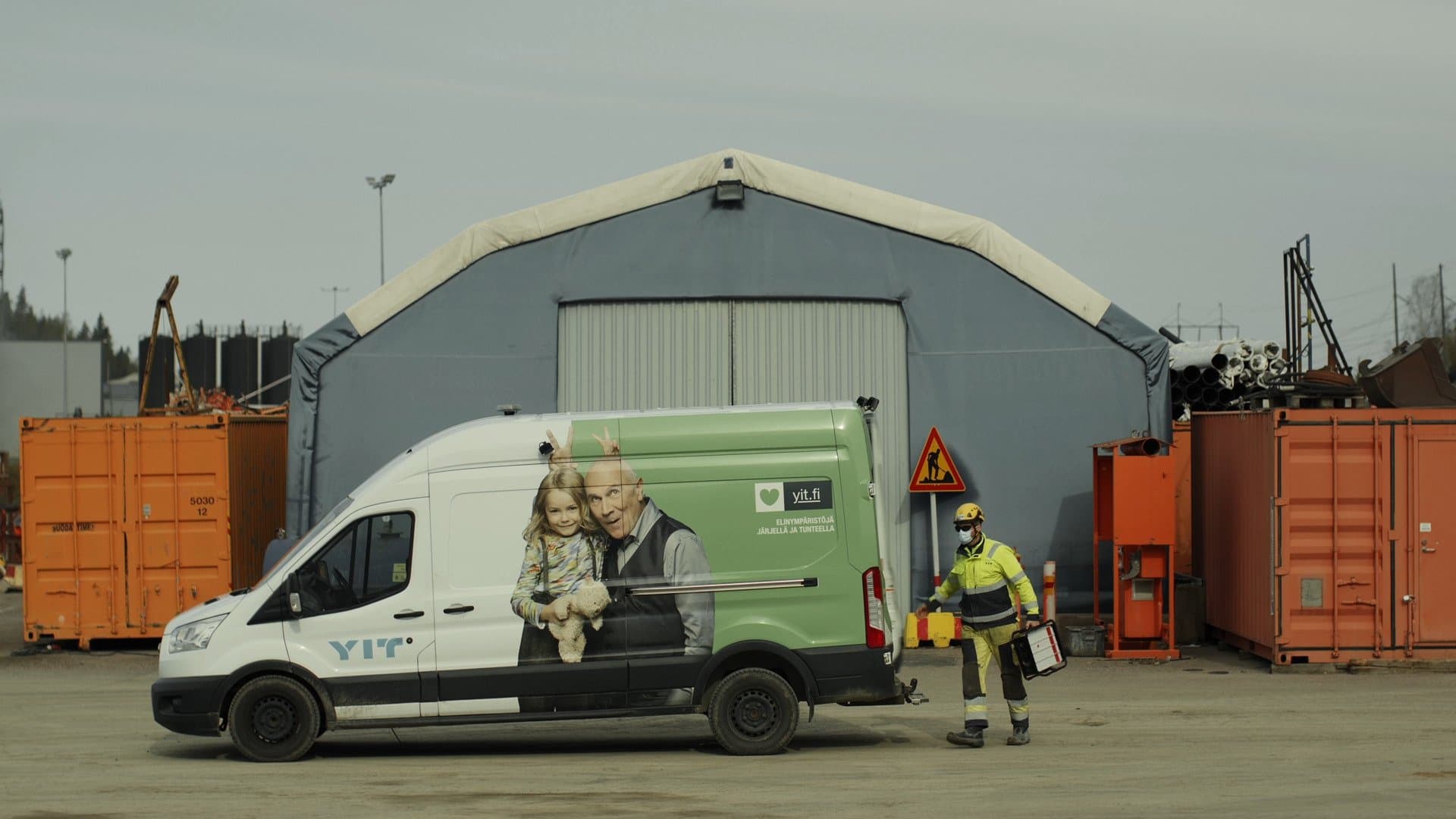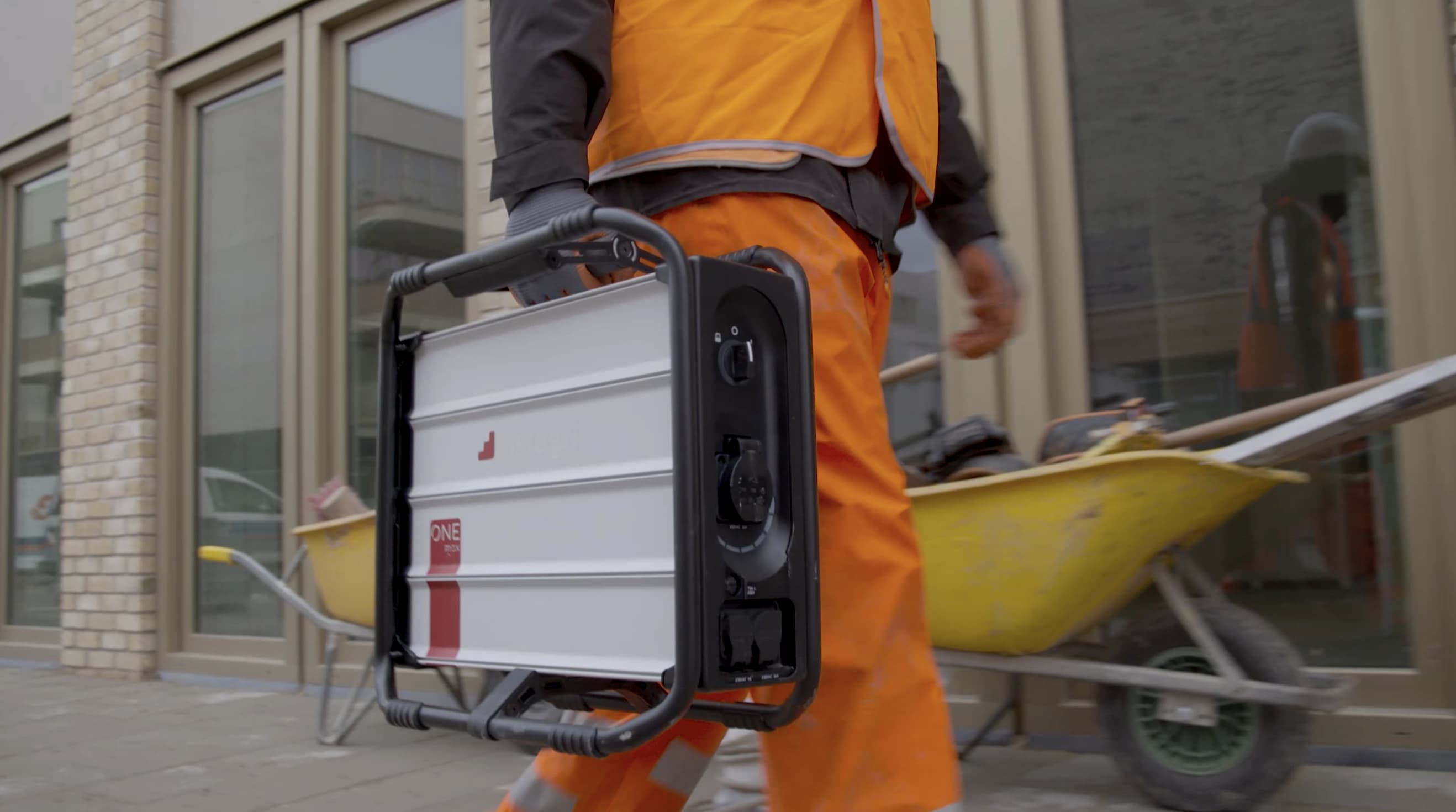
Addressing the overlooked environmental problem
Governments across the world are ramping up policies to drive more investments toward climate neutrality. While public authorities are actively pushing for a clean energy transition in areas like manufacturing and transport, a significant source of emissions is still largely overlooked.
Fuel-driven combustion generators are the main source of power for off-grid work in industries like construction, events and emergency response. And these small engines are far from ideal: they cause significant air pollution and drive climate change and economic costs. Still, professionally operated combustion generators are barely regulated in the EU or elsewhere, and data on their impact on the environment is limited.
To change this, we have started collecting data during field studies to make fact-based comparisons on how portable battery systems outperform conventional combustion engines in terms of sustainability.
The positive impact of using our batteries
1.9 GWH
of energy delivered
The energy consumption of 1300 people in Germany
-21kt CO2e
through local use of our portable batteries
The yearly power output of 6 wind turbines
-10T NOX
through local use of our portable batteries
14,000 cars taken off the roads
What is it about?
What is it about?
We make clean electricity the new standard for portable power wherever needed. This starts with urban construction sites, outdoor events and goes as far as isolated places around the world. As our business grows, we are exploring new opportunities to deliver energy to people and enable them to work and live without constraints. Current solutions, like combustion generators, emit significant amounts of emissions such as nitrogen oxides (NOx) and carbon monoxide (CO). These are significant sources of urban air pollution and harm the health of users and bystanders. At Instagrid, we challenge the status quo with every kWh of energy provided and help to reduce local air pollution.
What's next?
What's next?
We want to improve urban air quality. Here’s our ambition: in 2023, we want to cut 40 tons of NOx emissions and 100 kilotons of CO2 emissions.
Taking a holistic look
The product carbon footprint
Total greenhouse gas emission up to
-97%
compared to a combustion engine our product carbon footprint is significantly lower

Let's break this down
Over it’s product lifecycle, the Instagrid ONE emits 1260 KG CO2e.
Battery cells
Electronics
Copper
Plastics
Steel & Iron
Ceramics
Paper
Aluminium

What is it about?
What is it about?
To get a full picture of the emissions associated with portable batteries, the whole lifecycle of the product needs to be considered. Greenhouse gas emissions related to the product can have a significant impact on the environment on a global scale. Therefore, we’ve conducted a full lifecycle analysis to better understand the environmental burden connected to the production, transportation, use-phase and end-of-life of our product. This helps us to derive measures that reduce global greenhouse gas emissions (CO2e in particular) along the product lifecycle. To enable a normalized comparison, the environmental impact has been broken down to a unit of 1 kWh of electricity delivered.
What's next?
What's next?
To reduce lifetime CO2 emissions, we have identified different areas of continuous improvements along the product lifecycle. During product development, we regularly assess alternative input materials. For example, the use of recycled aluminium has decreased the carbon footprint of the aluminium housing by 48%. During production phase, we work with our suppliers to collect primary data and increase energy efficiency in production. During use phase, we want to provide data on effective and clean charging for our customers. These initiatives will help us to reduce our product carbon footprint and increase our positive impact in fighting the climate crisis by offering a cleaner alternative compared to combustion generators.
Simple CO2 Calculation Tool
Use our simplified CO2 Calculation tool to estimate your yearly on-site CO2 emissions savings.
500 liters
Explore more data behind our CO2 calculations in our Impact Report

How about our company's footprint?
We will develop a net zero roadmap in 2023. Let's break this down
85.2%
Product Carbon Footprint (Scope 3)
14.6%
Other Scope 3 emissions, such as business travel and purchased goods and services
00.2%
Scope 1 & 2 emissions, including electricity, heat network and vehicle gas purchases for own use.
What is it about?
What is it about?
Our business activities generate greenhouse gases emissions through different business activities (Scope 1-3 emissions). This can negatively impact the environment and contribute to climate change. To better understand our contribution, as well as the potential for improvement, we have assessed our Corporate Carbon Footprint for the first time in 2022. We used the Greenhouse Gas Protocol methodology here, which covers 14 different emission scopes. These include, for example, car fleet, business travel and logistics as well as the energy consumption of corporate buildings. Indirect (Scope 3) emissions account for 99,77 % of our emissions. That’s emissions that we cannot directly control. The biggest bulk of these emissions come from the manufacturing of our products. Other indirect emissions come from sources like business travel and purchased goods and services. The remaining 0,23% are direct emissions (Scope 1&2), i.e., those that we have complete control over such as electricity, heating in our offices and gas for vehicles.
What's next?
What's next?
Since instagrid has outsourced most of the production of our battery units, our Scope 1 and 2 emissions are comparatively low. We have already tackled many areas of improvements, such as EV carpool, offering commuter benefits and set up a business travel policy. To tackle our Scope 3 emissions effectively, we will work on a net zero roadmap in 2023 that includes concrete measures for improvement.

